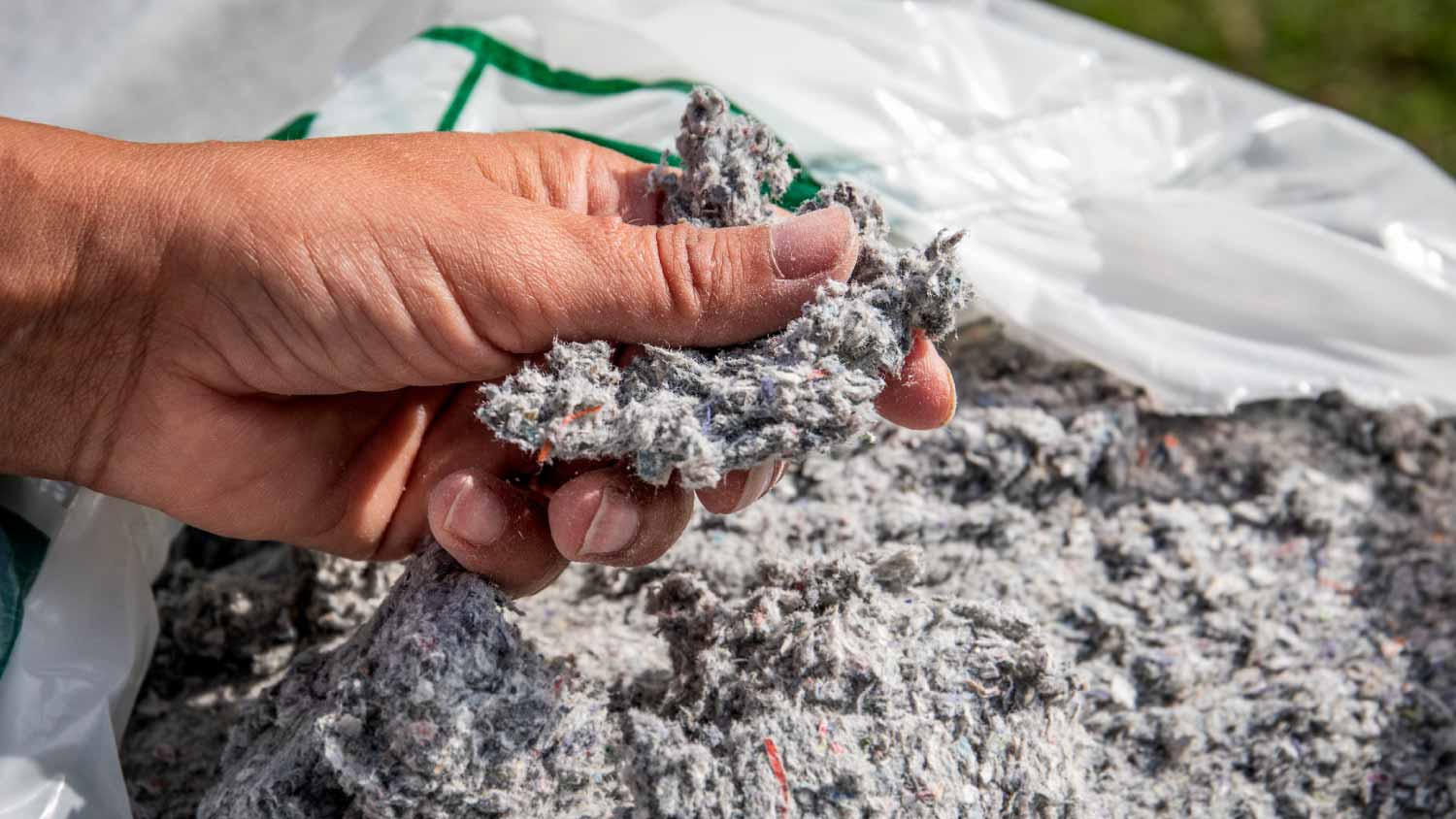
Insulating your attic can massively improve your home’s efficiency and reduce electric bills. Use this guide to find out what attic insulation will cost you.
Consider this eco-friendly insulation option to keep heat in your home


Because it is blown-in, cellulose is an excellent choice to add insulation in difficult-to-reach areas.
Cellulose insulation is considered cost-effective, ranging from $0.60 to $2.30 per square foot.
Unfortunately, cellulose insulation settles easily, which can leave gaps that allow cold or warm air into your home.
Proper home insulation is critical, ensuring that your home doesn’t lose heat when the temperature drops. There are many insulation material options on the market, each with its own pros and cons. Cellulose insulation is gaining popularity as an eco-friendly and effective solution for keeping homes comfortable and energy-efficient. Its rise to prominence can be attributed to its numerous advantages, including its excellent R-value and ability to be installed in difficult-to-reach places. However, like any material, cellulose insulation comes with its own set of drawbacks. In this article, we will delve into the pros and cons of cellulose insulation to help you make an informed decision about whether it's the right choice for your home.
Blown-in cellulose insulation is insulation made from recycled, organic materials, such as paper, cardboard, and wood. These materials are hybridized and densely packed to prevent airflow and keep your home warm in the winter and cool in the summer. In addition, cellulose insulation is treated with non-hazardous chemicals, such as borax, to repel insects and fire.
According to Angi data, 54% of homeowners report having blown-in insulation in their attics. Other common locations for this essential home insulation are inside the walls and ceilings.

Cellulose insulation is known for being versatile, affordable, and eco-friendly. It’s a great choice for those who need to insulate existing walls, as it doesn’t require the walls to be torn down and replaced. Read on to learn the additional pros of installing cellulose insulation.
Got an old house with tons of nooks, crannies, and corners? Cellulose insulation can be a real lifesaver; it is blown-in, and thus able to settle into any shape in your walls and attic. If you need insulation in an already-finished wall, it’s likely that your only option will be loose-fill insulation—otherwise, you’d need to remove the drywall, add the insulation, and then replace the drywall.
Cellulose has a high R-value, which means that it has powerful insulating properties. Cellulose’s R-value is around 3.2 to 3.8 per inch. A layer of eight to nine inches thick has an R-value of about 30; you’d require 12 inches to achieve the same R-value with fiberglass.
If you’re worried about the environmental footprint of your home building materials, you will sleep easy after installing cellulose insulation. It’s mostly (70%-80%) made from recycled paper, cardboard, and wood products, minimizing its carbon footprint.
You might be concerned about having paper-based insulation, but cellulose is treated with boric acid and borax to ensure it is fire-resistant. In fact, cellulose insulation is one of the few insulation materials that has a Class 1 Fire Rating—this means that, in the case of fire, flames would spread slower than with other materials.
As it is made with recycled materials, cellulose is affordable. On average, cellulose insulation costs $0.60 to $2.30 per square foot.
Before deciding on cellulose insulation for your home, make sure you understand its drawbacks.
One of cellulose’s pros can also be a con: the material’s ability to fill and settle into any area means it settles and compacts more easily. This can leave gaps at the top of spaces, allowing for cold or warm air to escape your home.
Cellulose soaks up any moisture it comes in contact with, and takes a long time to dry; this can lead to mold and mildew problems. In addition, damp or wet insulation has a lower R-value, making it much less effective at preventing air transfer.
Blown-in insulation requires special machinery, so if you’re planning to DIY the blown-in insulation, expect to rent a blower. In addition, cellulose insulation can be messy to install, leaving behind a lot of dust, so be prepared for a lengthier cleanup process than you would with batt and roll insulation. Unless you are experienced in this type of project, it’s always best to consult with a local insulation installation professional to ensure the job is done right the first time.
From average costs to expert advice, get all the answers you need to get your job done.

Insulating your attic can massively improve your home’s efficiency and reduce electric bills. Use this guide to find out what attic insulation will cost you.

Wool insulation offers a higher R-value than fiberglass but is more expensive. Use this guide to estimate wool insulation costs for your home.

How much does a radiant barrier cost? Our guide breaks down prices by type of barrier and size of your attic space.

Learn everything you need to know about mineral wool insulation when selecting the insulation with the best R-value for your home.

Most people don’t know the whys and hows of home insulation; they just know their house is too hot. Ready to cool down? Learn why you need proper insulation in your home.

How to decide if you should add insulation to your attic floor or ceiling to make your home more efficient